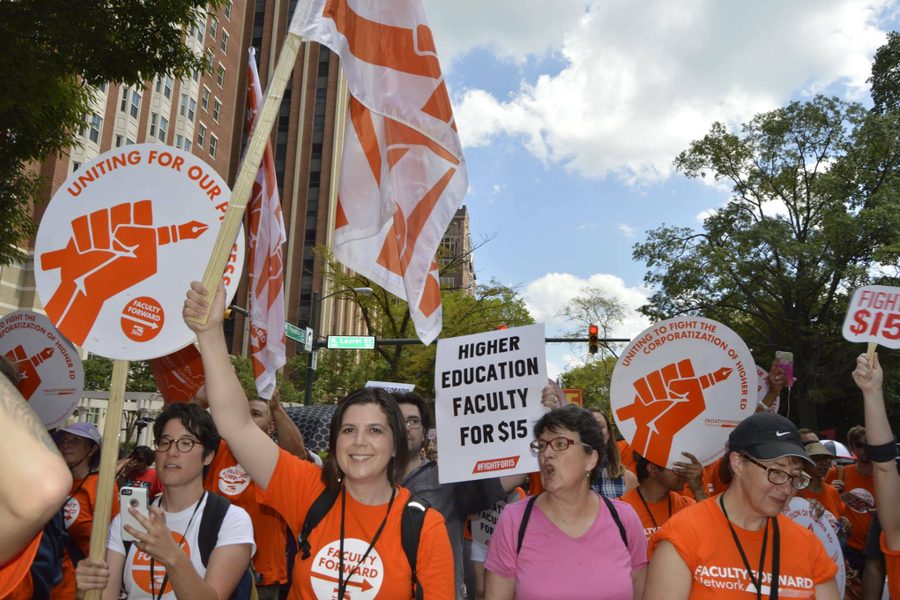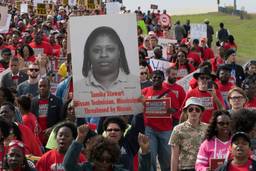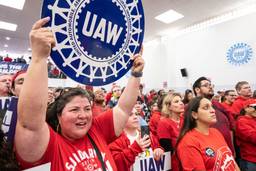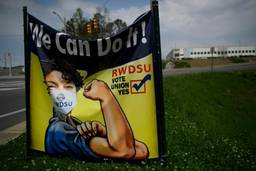
In a strongly-worded opinion released Tuesday, the National Labor Relations Board (NLRB) ruled that teaching and research assistants at Columbia University and at other private institutions of higher education have the right to organize unions and collectively bargain with the universities that both employ and teach them.
The three Democratic NLRB members wrote that even if students are enrolled in the university to educate themselves, they also meet the definition of an employee — working for pay to do what someone else wants them to do. Thus, they should have the same labor rights as any other employee, the members wrote. (The lone Republican member dissented; one seat is vacant.)
The ruling also emphasized that the aims of the National Labor Relations Act (NLRA) were broad — to encourage workers to organize and bargain collectively — and that the definitions of employer and employee are broad. As a result, the ruling read, “it is appropriate to extend statutory coverage to students working for universities covered by the Act unless there are strong reasons not to do so.”
The decision is a major victory for graduate student employees and the unions that want to organize them. Graduate students at some public universities already have the right to form unions under state law, but the ruling clears the way for campaigns to move forward at Duke University, Northwestern University, American University and other private institutions.
Shortly after news of the NLRB decision broke, the Service Employees International Union released a statement that cheered the ruling.
“SEIU members in every industry are coming together to ensure that our broken higher education system will not derail the next generation,” said SEIU President Mary Kay Henry. “Restoring the rights of graduate workers is a critical step in ensuring that those on the front-lines of teaching and researching at colleges and universities have a voice in improving higher education for all of us.”
The NLRB has shifted back and forth over the past several decades on issues regarding who, among all the people on a university campus, is a worker and thus has the right to organize a union. In its decision in 2000 regarding New York University (NYU) teaching and research assistants, the NLRB decided that working as a TA or RA looked like many other “common law” employment relationships. Therefore, they should have the right to form a union and to bargain collectively, the NLRB said.
But four years later, looking at Brown University, the Republican-leaning majority argued that the NLRA was intended to cover “economic,” not “educational,” activities, and overturned the NYU decision. (The administration there then voluntarily agreed to recognize the union). In its rejoinder to the authors of the Brown decision, the current NLRB majority, reviewing the evidence from Columbia, said that treating teaching and research assistants as workers best fulfilled the intentions of the NLRA. Also, the NLRB wrote, just because work could be educationally useful did not mean it was not, as well, a job.
The Columbia decision could be important in several ways beyond the obvious potential for graduate student organizing. Here’s how:
- It could increase the rights and rewards of an important group of often underpaid workers in a growing sector with significant economic importance. Higher education depends increasingly on a vast infrastructure of contingent employees. In many cases, the declining standards for those lower ranks erode standards for tenured faculty. Together with student unions, these potentially newly-organized forces could pressure schools toward a more democratic American education.
- Although the Columbia decision affects only teaching and research assistants directly, a potential uptick in organizing could inspire other groups to organize and encourage more unions to join in the already thriving competition for campus workers, whatever their jobs. The NLRB ruling may spill over in spirit as well, with union membership having a new prestige among more highly-educated, white-collar workers, including those working in research centers.
Organizing graduate student workers in both public and private universities has never been easy. But after Tuesday’s NLRB ruling, it’s more possible than ever before.

I hope you found this article important. Before you leave, I want to ask you to consider supporting our work with a donation. In These Times needs readers like you to help sustain our mission. We don’t depend on—or want—corporate advertising or deep-pocketed billionaires to fund our journalism. We’re supported by you, the reader, so we can focus on covering the issues that matter most to the progressive movement without fear or compromise.
Our work isn’t hidden behind a paywall because of people like you who support our journalism. We want to keep it that way. If you value the work we do and the movements we cover, please consider donating to In These Times.
David Moberg, a former senior editor of In These Times, was on staff with the magazine from when it began publishing in 1976 until his passing in July 2022. Before joining In These Times, he completed his work for a Ph.D. in anthropology at the University of Chicago and worked for Newsweek. He received fellowships from the John D. and Catherine T. MacArthur Foundation and the Nation Institute for research on the new global economy.







